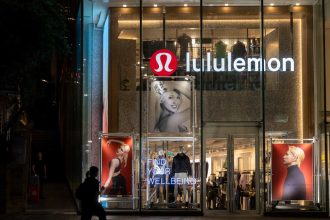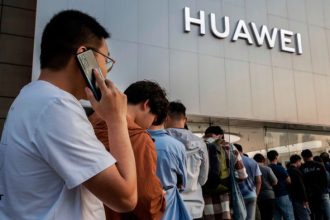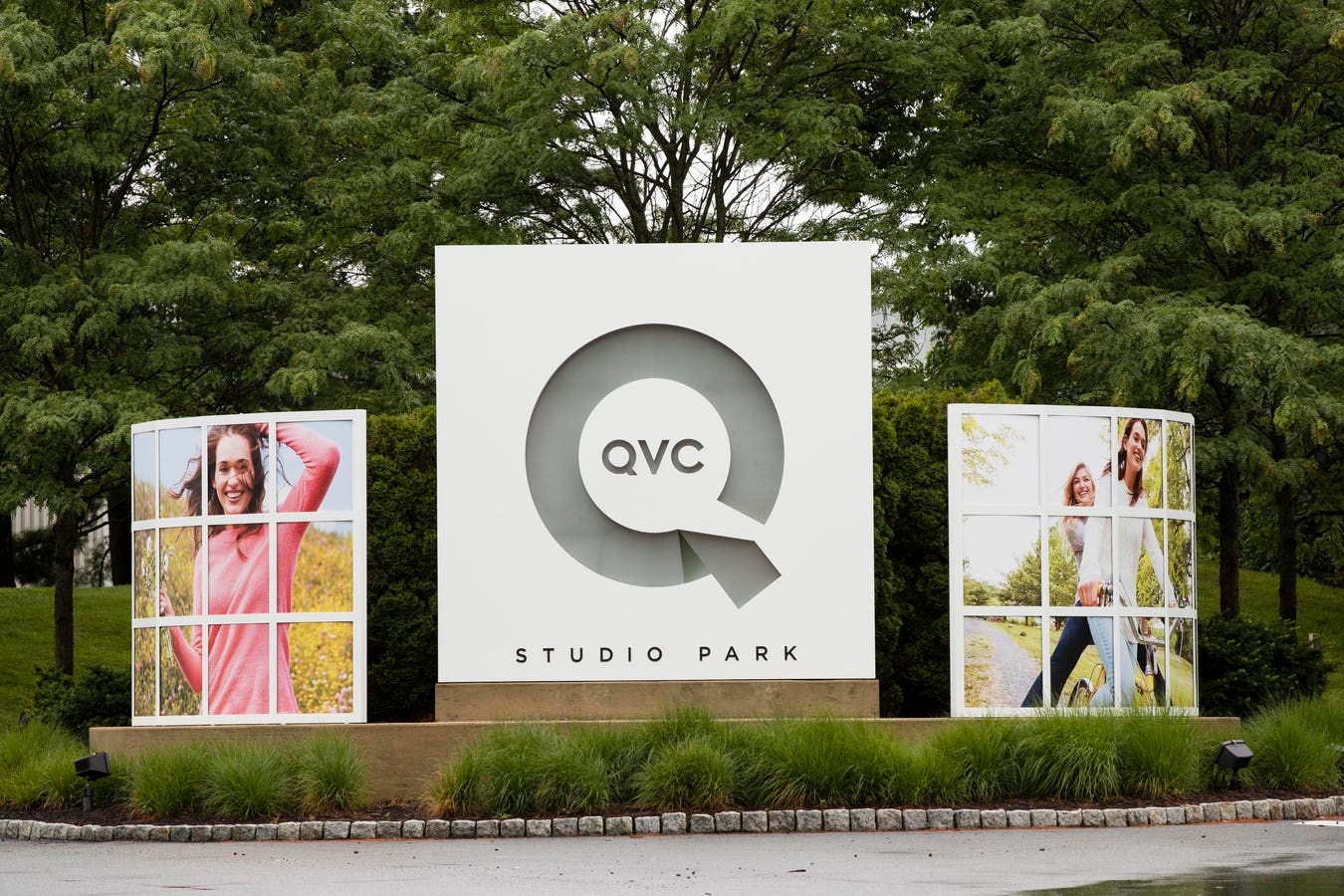The traditional business of TV shopping is at an inflection point as it competes with other retailers for consumers’ discretionary spending and the entertainment industry for their attention. Cracks in the traditional TV shopping business model are beginning to show.
While the nation’s number three shopping channel iMedia Brand’s ShopHQ is still broadcasting, it is in Chapter 11 bankruptcy proceedings and been delisted from the Nasdaq. QVC, the number one shopping channel and number two HSN, jointly owned by Qurate Retail, have had a rough time too.
In May of last year, Qurate received a Nasdaq delisting notice but got a last-minute reprieve after selling off Zulily. Still, in October, it topped CreditRiskMonitor’s list of retailers on the verge of bankruptcy along with Farfetch
FTCH
RAD
CEO David Rawlinson is tasked with righting the Qurate ship. Since joining the company in October 2021, he had scant good news to report in earnings calls.
But that changed in the company’s latest 2023 earnings report. The results of Project Athens’ three-year transformation plan, which was implemented a year after his arrival, are starting to bear fruit.
New Business Model Needed
Project Athens is a plan to not just make over the company but to transform its entire business model.
Qurate is keeping the best of the highly personal and entertaining TV shopping model perfected over the last 40-odd years by QVC and HSN and adapting it to a 21st-century video-commerce business model that expands beyond cable television and e-commerce to large-screen and small-screen/mobile streaming services, social streaming (e.g. TikTok, Facebook, X), livestream “fast” services (i.e. free ad-supported streaming services) and in-app purchasing.
“I don’t mind people using the term ‘TV shopping,’ but the better description is ‘video shopping’ or v-commerce,” he shared with me after the earnings call.
As more consumers cut the cable cord, streaming is v-commerce’s future. “We have near universal coverage in the streaming universe on Apple TV, Roku, YouTube, Sling, Amazon Fire TV, Google TV and more. We had 23% growth in that universe, making it the fastest growing part of our business, yet it’s still only about 5% of our total minutes viewed. Every day it’s becoming a bigger and bigger part of our business.”
Topline Turnaround
On the topline, Qurate’s revenues continued to slide in 2023, but the hemorrhaging slowed, even turned the corner. After reaching a high of $14.2 billion in 2020 and dropping only 1% in 2021, revenues declined 14% in 2023 and another 5% in 2023, from $11.2 billion to $10.6 billion, excluding Zulily.
But nearly two-thirds of the decline came from electronics, which were soft across the industry. And it saw growth in apparel, fitness, beauty devices, fashion accessories, footwear and fine jewelry where a lab-grown diamond collection priced from $1,300 to $5,000 was introduced on QVC with many pieces selling out immediately.
Because the company gets instant feedback on what’s hot and what’s not, it can quickly adjust presentations to shift the mix to higher-margin, faster-selling items. For example, it generated $5.7 million in sales of 19,000 Ninja Woodfire electric smoker and grill combo for $300 each, and a Barefoot Dreams throw yielded $6 million on Cyber Monday alone.
Qurate also started to add new customers in the third and fourth quarter 2023, after experiencing a steady drop over the past several years. The fourth quarter saw a 21% increase in new customers. QVC/HSN boasts some 8.1 million active customers with a mix of about half steady customers, one-fourth reactivated past customers, and one-fourth new customers.
Building customer loyalty pays off for the company. Existing customers account for roughly 31 items purchased and $1.6K in annual spend and generate 90% of QVC/HSN’s $7 billion in revenues.
QVC’s best customers, roughly 20% of its base who purchase at least 20 times per year, generate some three-fourths of revenues, purchasing on average 76 items in the year. The best customers’ spending increased on average 9% to $3,900.
One pillar of the Athens Project plan was to better differentiate QVC and HSN in the market, which were near identical twin sisters since HSN was acquired at the end of 2017. Rawlinson describes QVC as a “premium luxury retailer,” and its stable of long- time hosts have established a special relationship with their customers as trusted advisors, even friends. The average tenure for its most popular hosts is nearly 30 years.
“Our hosts build quality relationships with our viewers in ways that really surprised me,” Rawlinson related. “I get letters on a daily/weekly basis, often from people going through a hard time who feel a real connection with a host talking about their personal journey. David Venable has been very courageous talking about his weight loss journey. That makes a powerful connection and builds deep relationships of understanding, vulnerability and trust with our viewers.”
HSN, by contrast, is described as “a little more playful, irreverent at times, and moves a little faster.” It’s customer base is a bit younger than QVC, which is more focused on women 50+ with greater discretion to spend, and more ethnically diverse.
There’s also slightly more emphasis on celebrity presenters, like Dolly Parton, Iman, Giuliana Rancic, Jessica Simpson, Kathy Ireland, Christian Sirano and Wolfgang Puck, who just celebrated his 25th year with HSN and has generated $600 million in sales for the company.
Bottom Line Recovery
With things looking up on Qurate’s topline, Rawlinson can take a victory lap from the company’s bottom line performance in 2023. It turned an operating loss of $1.5 billion last year to a $647 million gain. It unlocked $577 million in free cash flow in 2023 versus use of $9 million last year. And it reduced debt by $956 million in 2023.
It also turned the corner on adjusted OIBDA starting in the third quarter that picked up steam in the fourth, rising 73% to $340 million over fourth quarter 2022, including the divestiture of Zulily, and up 46% excluding it.
OIBDA improvements are credited to:
- Gross margin expansion with a shift to higher-quality products with higher average selling prices and profit margins
- Reduction in fulfillment expenses by renegotiating shipping and delivery rates and executing other operational enhancements
- Reducing inventory balance by 22% year-over-year, which opened the door for newer product assortments
Rawlinson and his team have kept the wolf threatening its door last October at bay, but according to James Gellert, executive chair of financial health analytics firm RapidRatings, it still has work to do.
“Qurate improved its financial health in 2023 but needs to work itself out of this multi-year earnings volatility before the market can have confidence in the stock and the company,” he shared.
“Significant swings in profitability are hard for management and employees; this can lead to inconsistent financial health. Through product tweaks, asset sales, and management changes, the company is trying to adjust and innovate in the evolving retail landscape,” Gellert added.
Restoring The Human Connection To Retail
The ancient Chinese philosopher Lao Tzu said, “If you do not change direction, you may end up where you are heading.” Over the last few years, the signs were there about where Qurate was heading, and just in time, Rawlinson stepped in to change direction.
And not being an industry insider has worked to his advantage since it gives him a more objective and broader line of sight than someone steeped in the industry might have. He quickly recognized that a business model transformation was needed not just a doubling down on industry-standard strategies and processes.
Rawlinson was opportunistically recruited from NielsenIQ, where he was CEO before an ownership change, though he still serves on its board. Prior to that, he was president of Grainger Global Online, the fastest growing division of B2B industrial products supplier W
W
He also held executive positions with engineering and manufacturing company ITT and worked under Presidents George W. Bush and Barack Obama administrations, during the later serving as a senior economic policy advisor in the White House National Economic Council.
B2C retailing was new to him, but he’s a quick study, having a J.D. from the University of South Carolina and a Harvard M.B.A. He immediately got that retail is first and foremost a people, not a product business.
“Retail really starts at the human level,” he shard. “As I look at the future of retail, there are two clear winners. One is the big-box stores with fluorescent lighting, concrete floors, self-checkout and largely impersonal. The other is e-commerce which is algorithmic driven. They have all kinds of products consumers need, but for ordinary people, big boxes and e-commerce are really cold environments.
“In retail there is a need for something more human and more connected. Our hosts are really critical to creating that sense of human connection. A lot of retailers forgot how important it is to have a person who you trust speak to you about the product. We are prepared to take advantage of that,” he concluded.
Read the full article here





